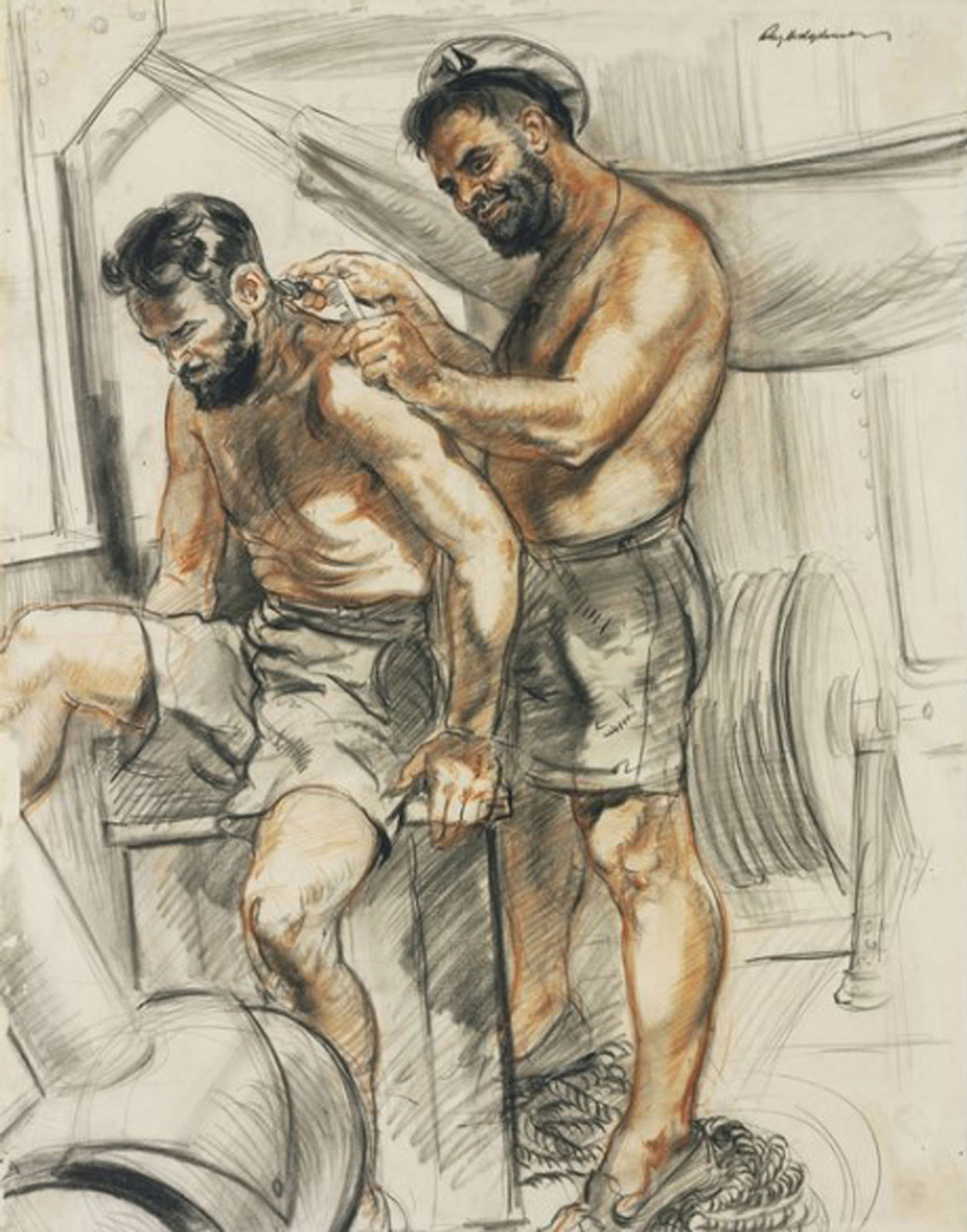Operating ASDIC equipment
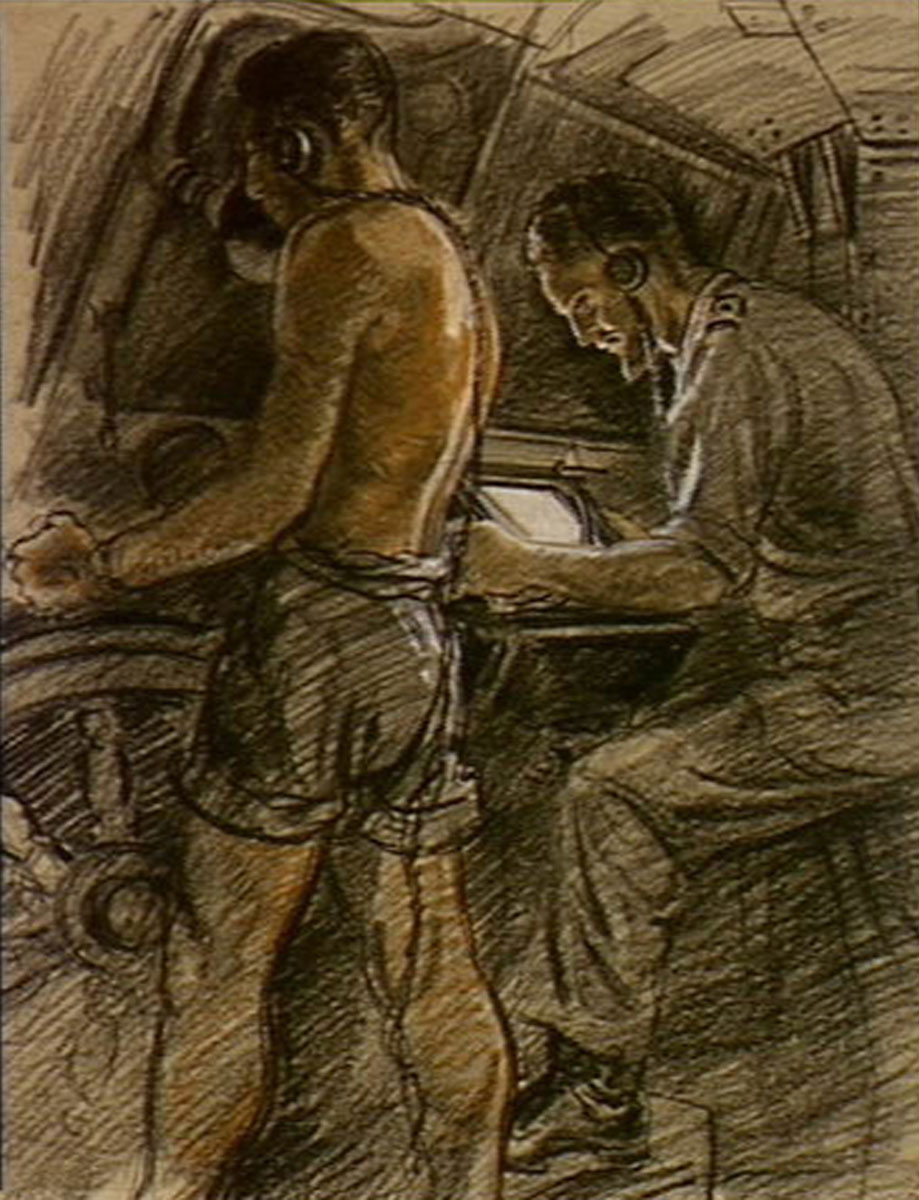
ASDIC was the primary underwater detection device used by Allied escorts throughout World War 2.
Later known as Sonar this transmitter-receiver sent out a highly directional sound wave through the water. If the sound wave struck a submerged object it was reflected back and picked up by the receiver. The length of the time from transmission until the echo was received was used to measure the range, which was shown as a flickering light on the range scale. By mounting the transmitter head so that it could be directed almost like a searchlight, the bearing of the target could be read from the compass receiver.
- About Roy Hodgkinson
Roy was born in Ashfield, Sydney. He studied at the Royal Art Society of New South Wales under Dattilo Rubbo an Italian-born Australian artist and teacher. He later studied at the East Sydney Technical College under sculptor Raynor Hoff.
Between 1929 and 1931, Roy worked as an illustrator and cartoonist for 2 Sydney newspapers, Daily Guardian and The Sun then on the Melbourne Herald (1932-76). He spent 1938-39 travelling in Europe. He visited England, France and Italy to study art and investigate commercial printing for his work with The Herald.
On his return to Australia, Roy enlisted as a trooper in the Armoured Division and was posted to Darwin, Northern Territory in time to capture on canvas the Japanese bombing of Darwin in February 1942. He was transferred to the Australian Military History Unit, allowing opportunity to travel to New Guinea, India, Ceylon (Sri Lanka) and Burma (Myanmar). Roy was eventually commissioned as an official war artist on 10th September 1943, carrying the rank of Captain. His work was included in the Exhibition of Paintings, Drawings and Sculpture by Australian Official War Artists, National Gallery of Victoria, Melbourne 1943-44.
Roy was discharged from the Australian Imperial Force in March 1946. He returned to Melbourne to continue his art. Much of his post-war work shows scenes and portraits of the theatre. He was a long-serving member of the Melbourne Savage Club, which attracted artists, intellectuals and business leaders. He continued to work for The Herald newspaper, retiring as Chief Artist in 1976.
Roy’s works are detailed and intricate, showing both day-to-day life and the extraordinary. The Australian War Memorial holds many of Hodgkinson's works and has shown them in several exhibitions.
- About Sailors at work
Since entering World War 1 in 1914 with 16 ships, two submarines and 3800 RAN personnel (including 850 from the Royal Navy) the number of serving personnel in the Royal Australian Navy has fluctuated depending on the strategic and shifting financial environment. Over more than a century, the RAN’s and people have seen action in every ocean of the world.
Of the tens of thousands who have served, 2658 members have made the ultimate sacrifice defending Australia’s interests in warlike and peacetime operations across the globe.
Fortunately, for the vast majority who served in periods of peace or survived periods of hostilities the experience was positive.
In addition to their service in a particular category which involved specific duties, they also participated in communal duties such as coaling ship. Thus, the artworks included in this section relate to a mix of specialist and communal activities.
More reading
- Additional resources for Roy Hodgkinson
- Additional resources for Sailors at work
![Near miss, HMAS Wagga [Milne Bay] by Dennis Adams](https://navyhistory.au/wp-content/uploads/Near-miss-HMAS-Wagga-Miln-Bay-Adams-Dennis-1.jpg)
Near miss, HMAS Wagga [Milne Bay]
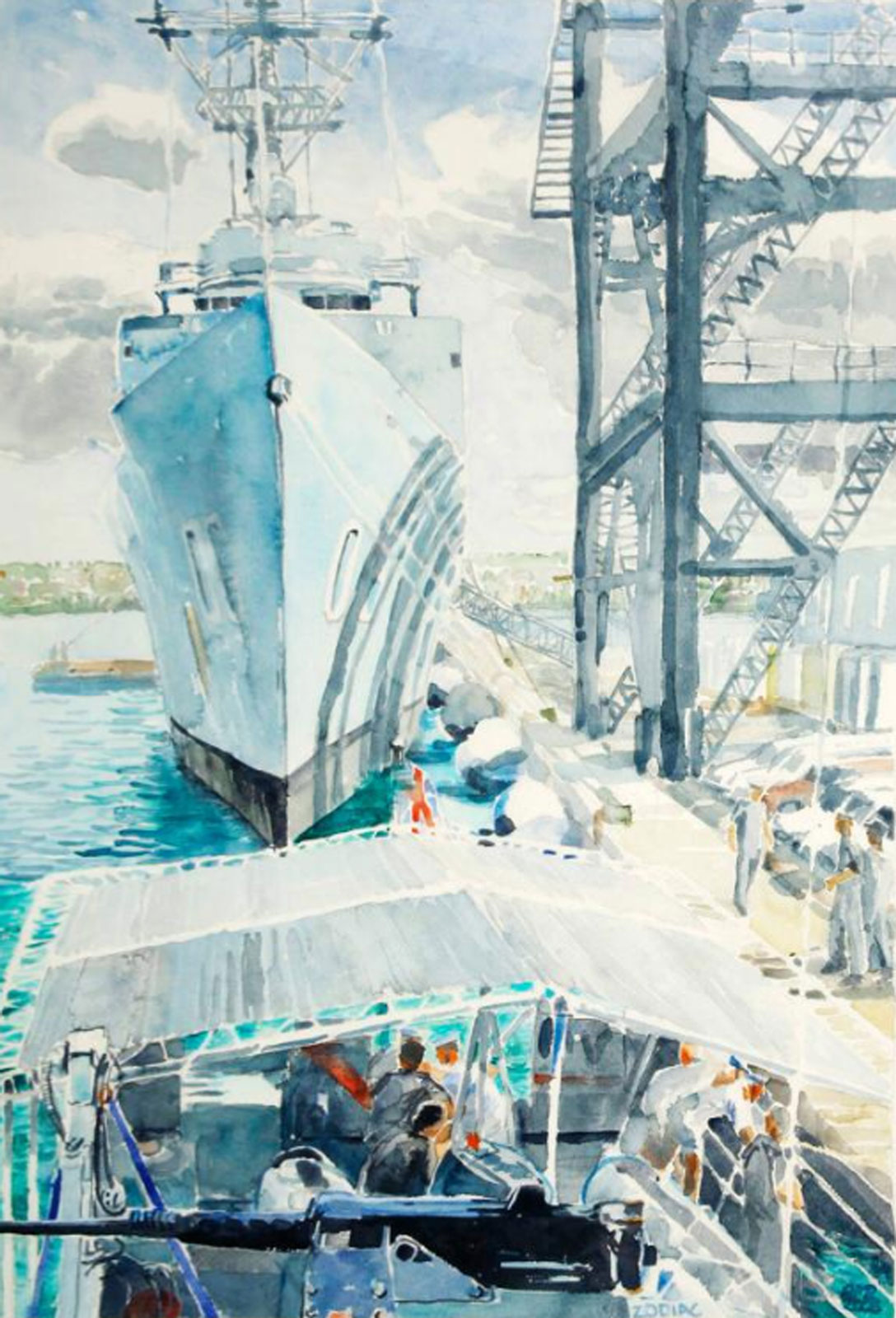
The crew of HMAS Townsville Tying Up Under the Bow of HMAS Newcastle
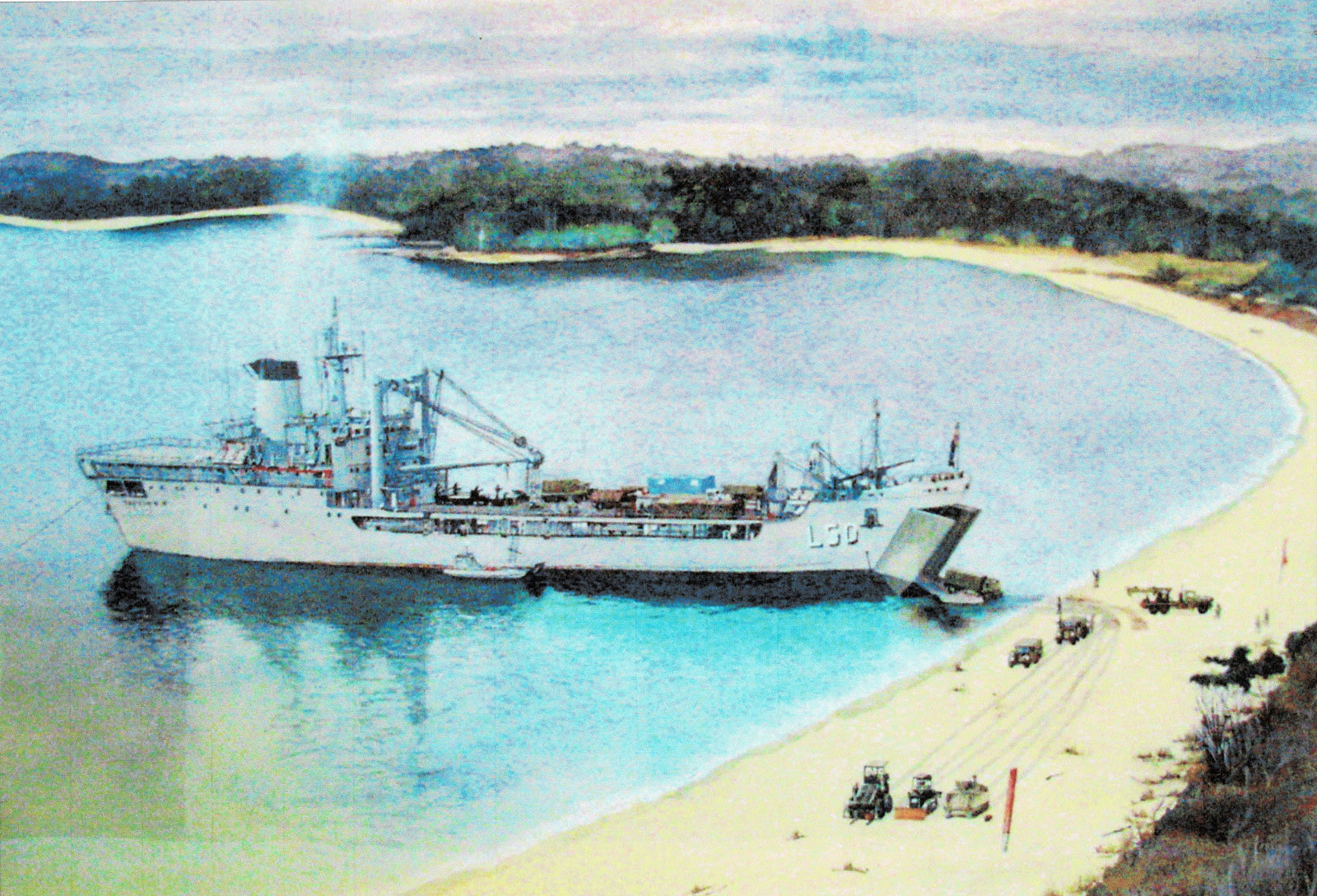
HMAS Tobruk

Unloading the Tobruk at Mogadishu wharf, Somalia

Grounding of HMAS Voyager
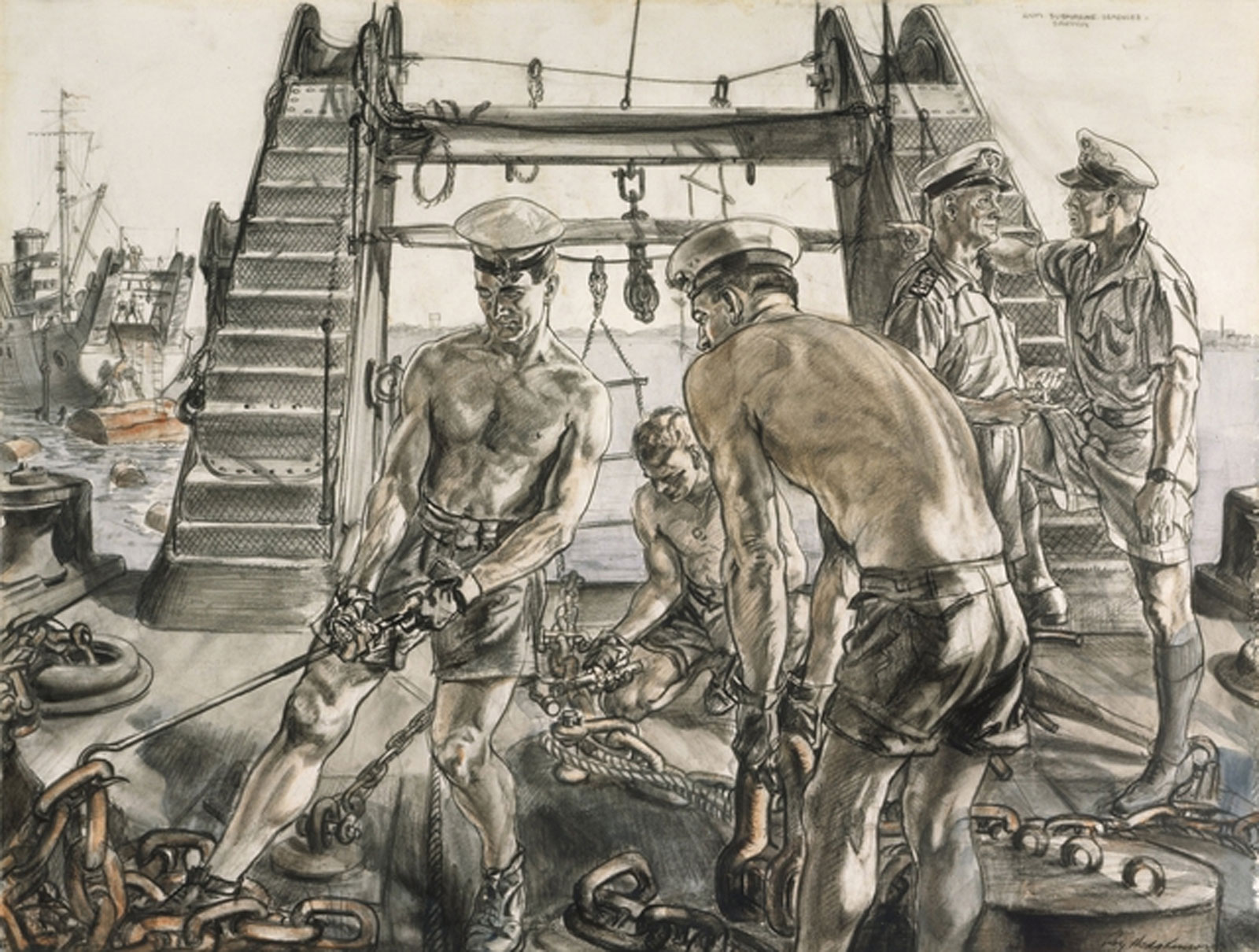
Anti-submarine defences, Darwin
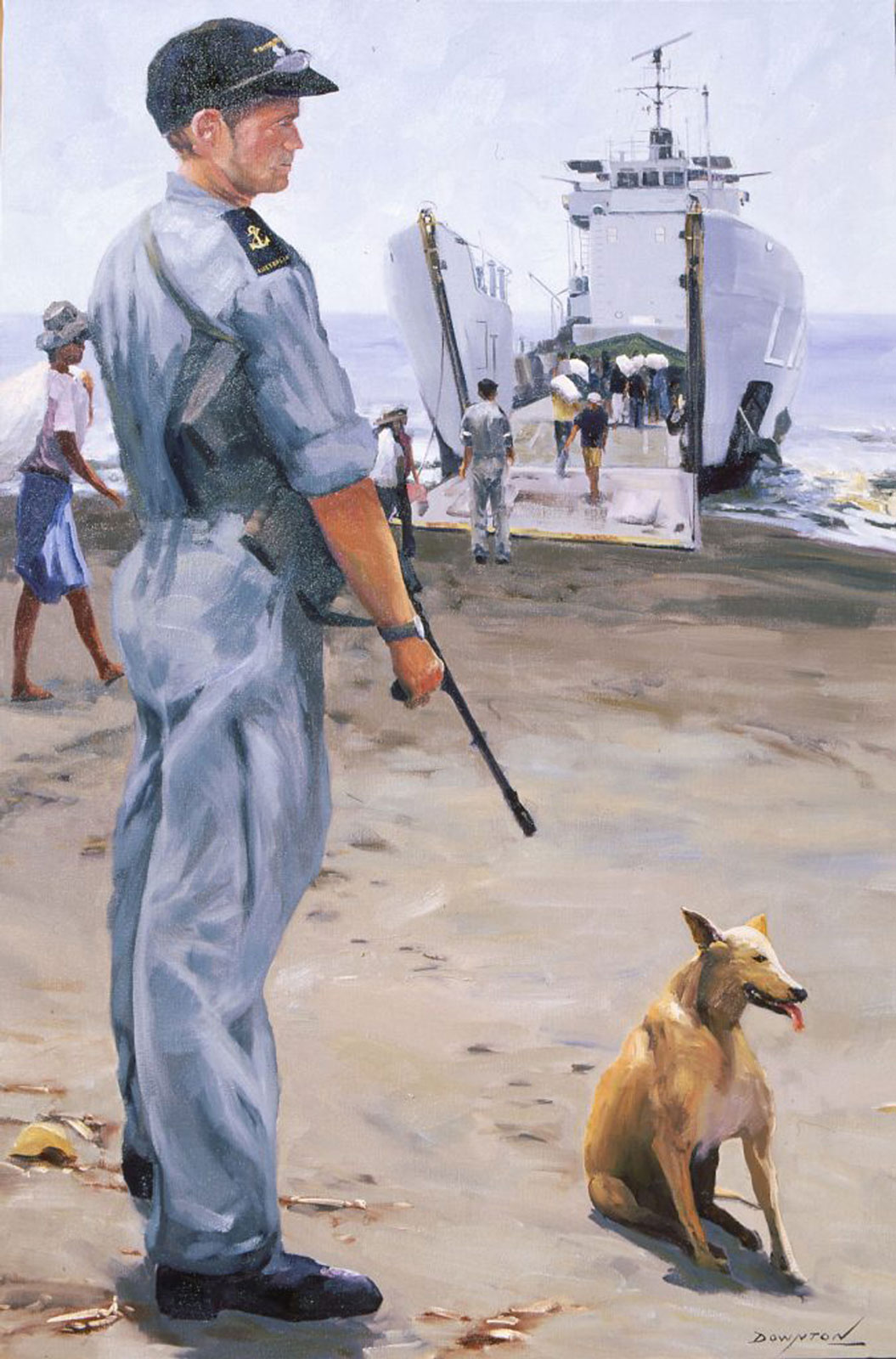
Essential Service Ship
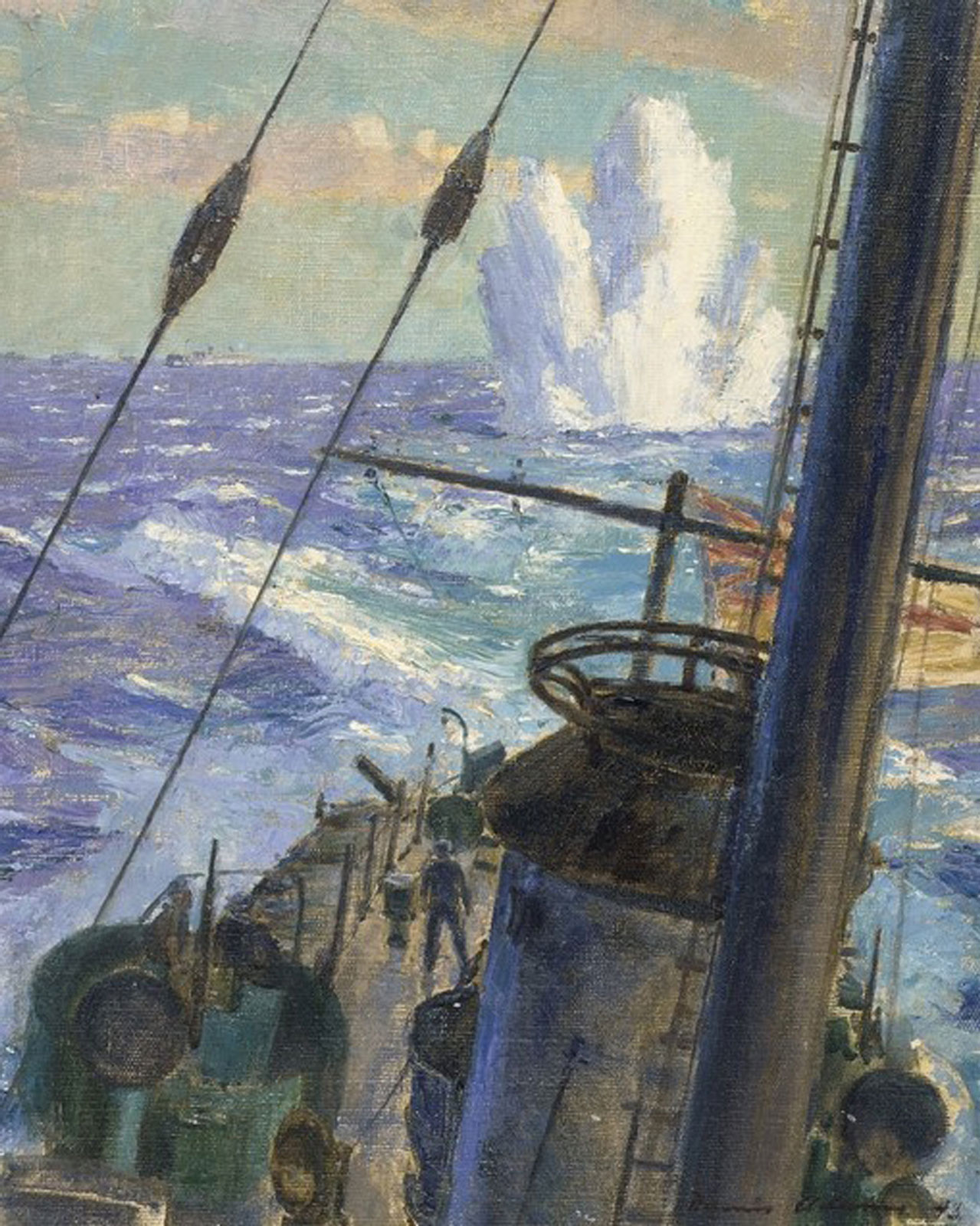
Depth charge, HMAS Swan
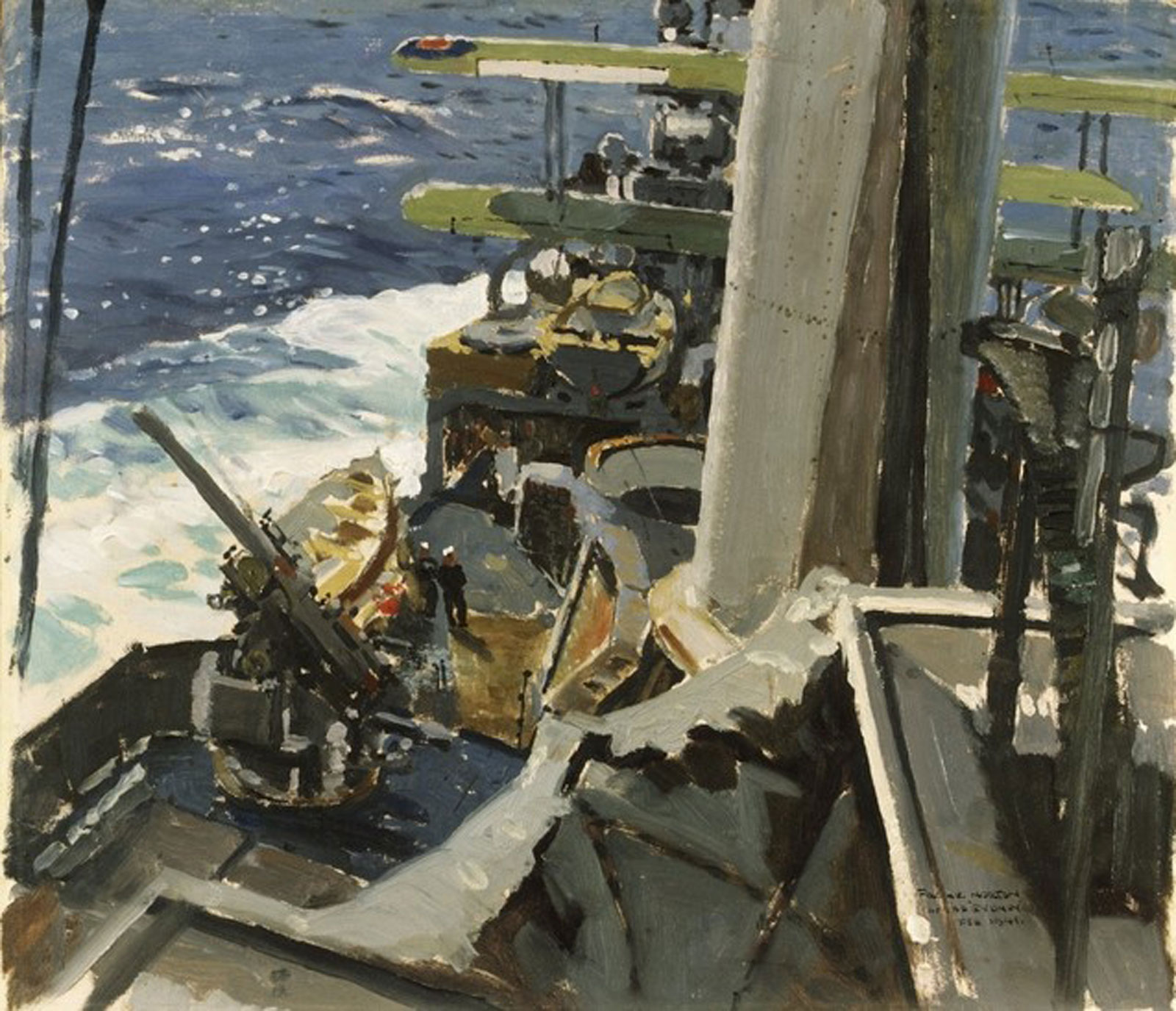
Camouflage, HMAS Sydney

Repairing turbines, HMAS Stuart
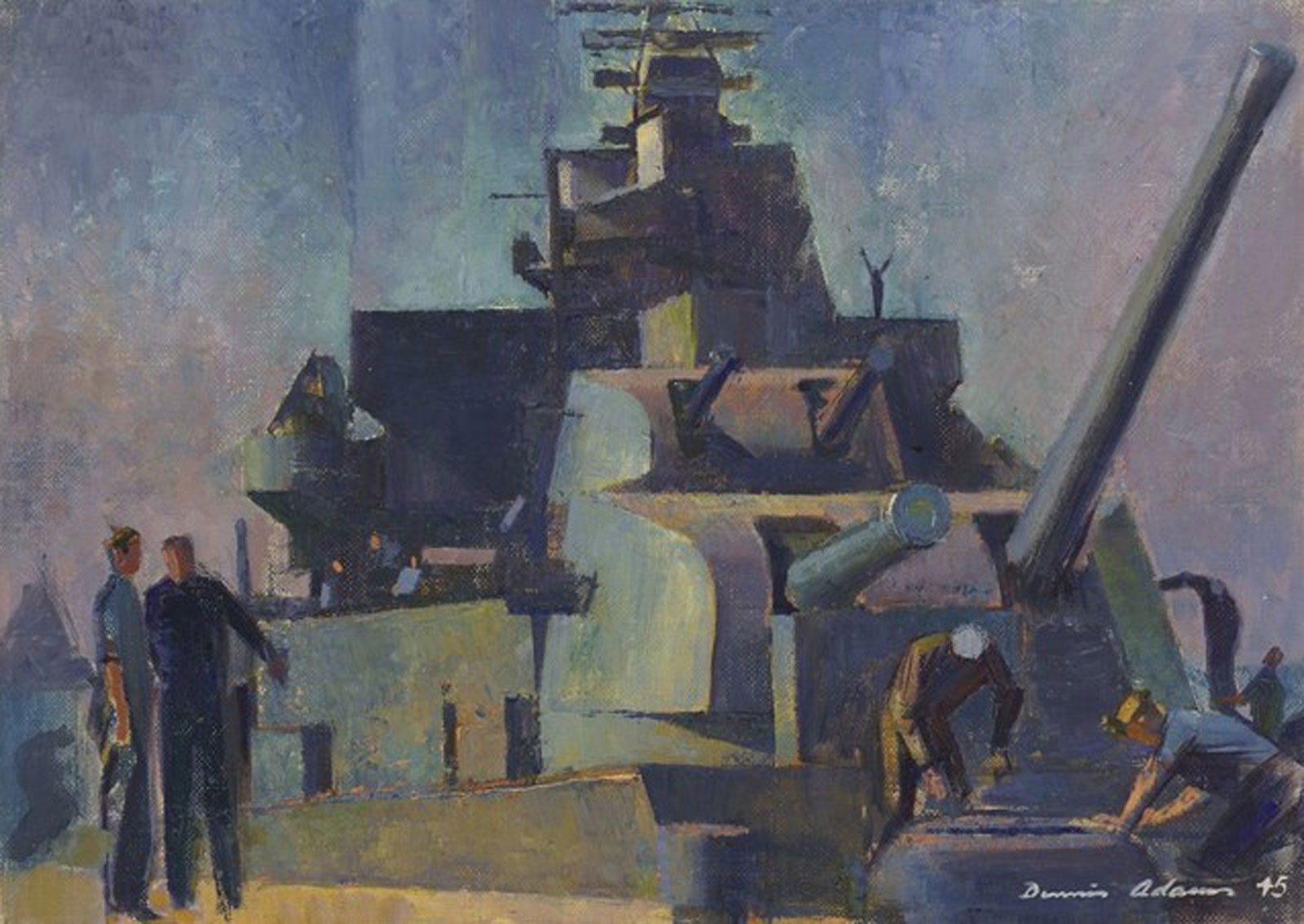
Superstructure, HMAS Shropshire

Plotting room, HMAS Nepal
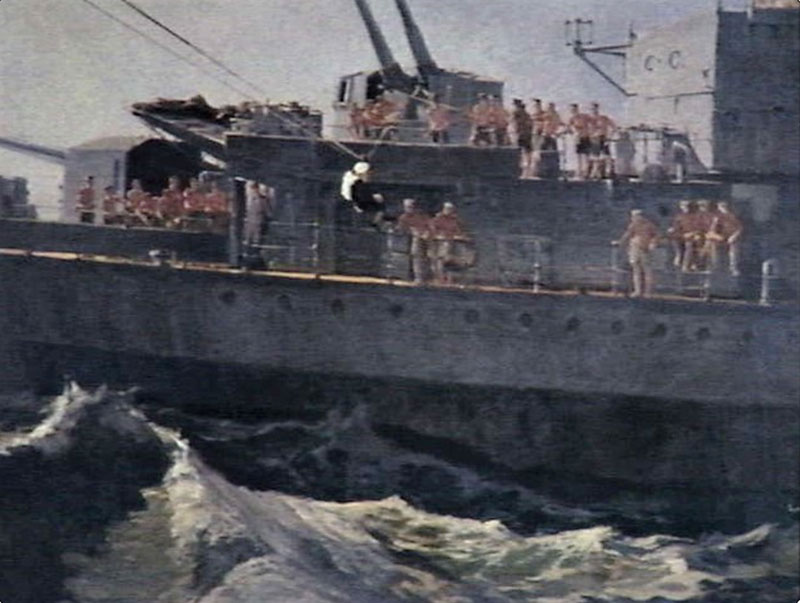
Transfer by bosun’s chair
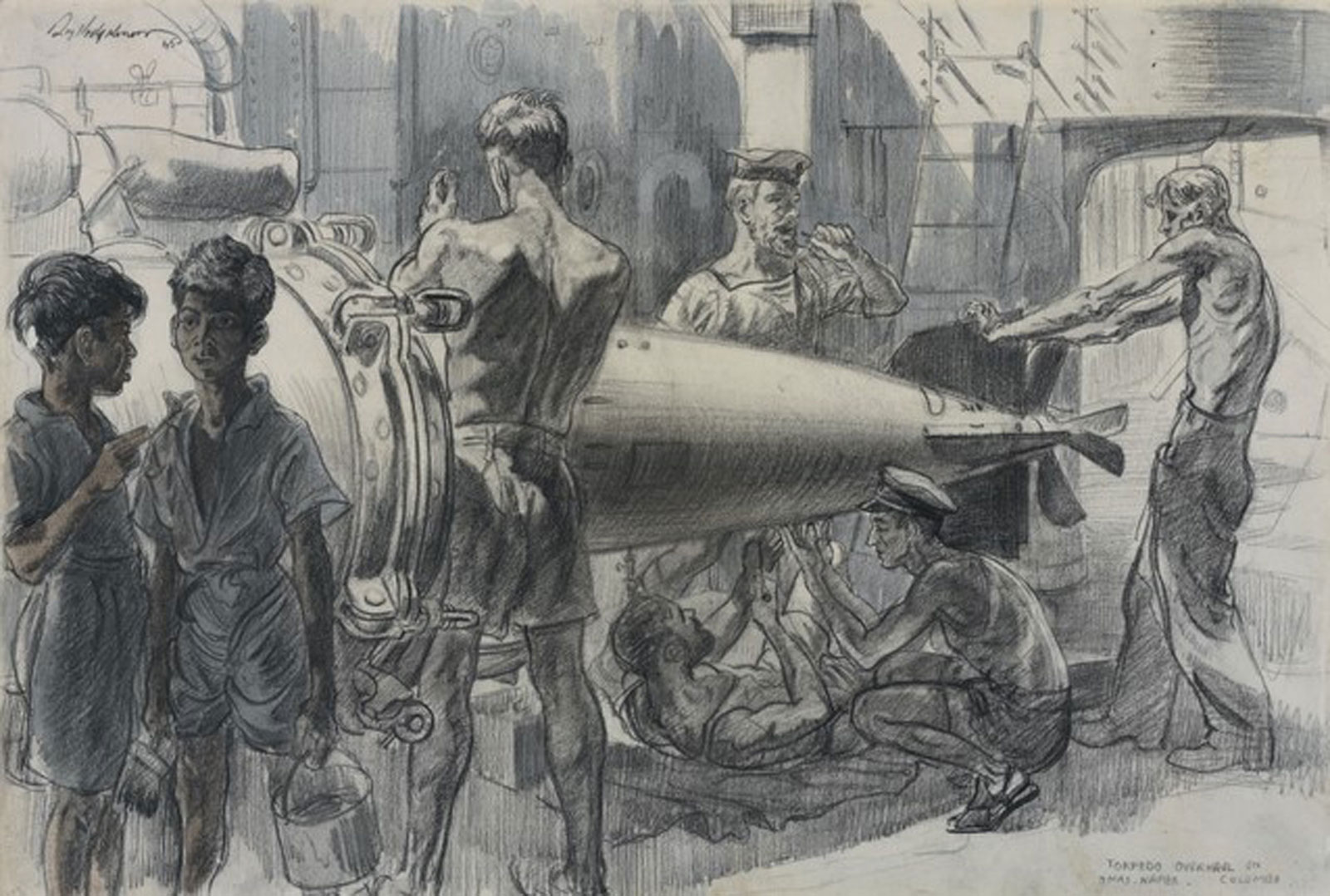
Torpedo overhaul on HMAS Napier
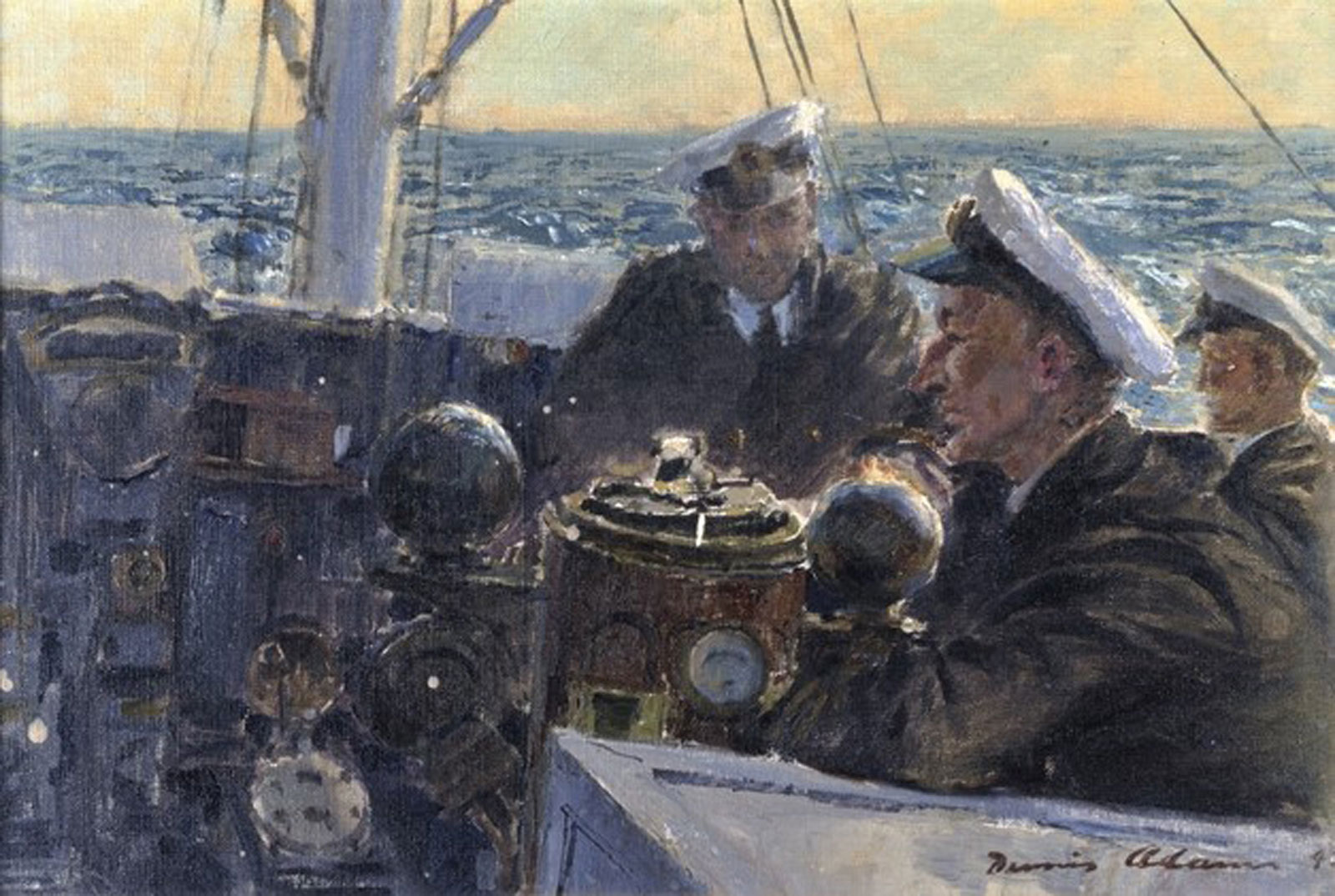
Compass Platform, HMAS Moresby (l)

Into safe hands
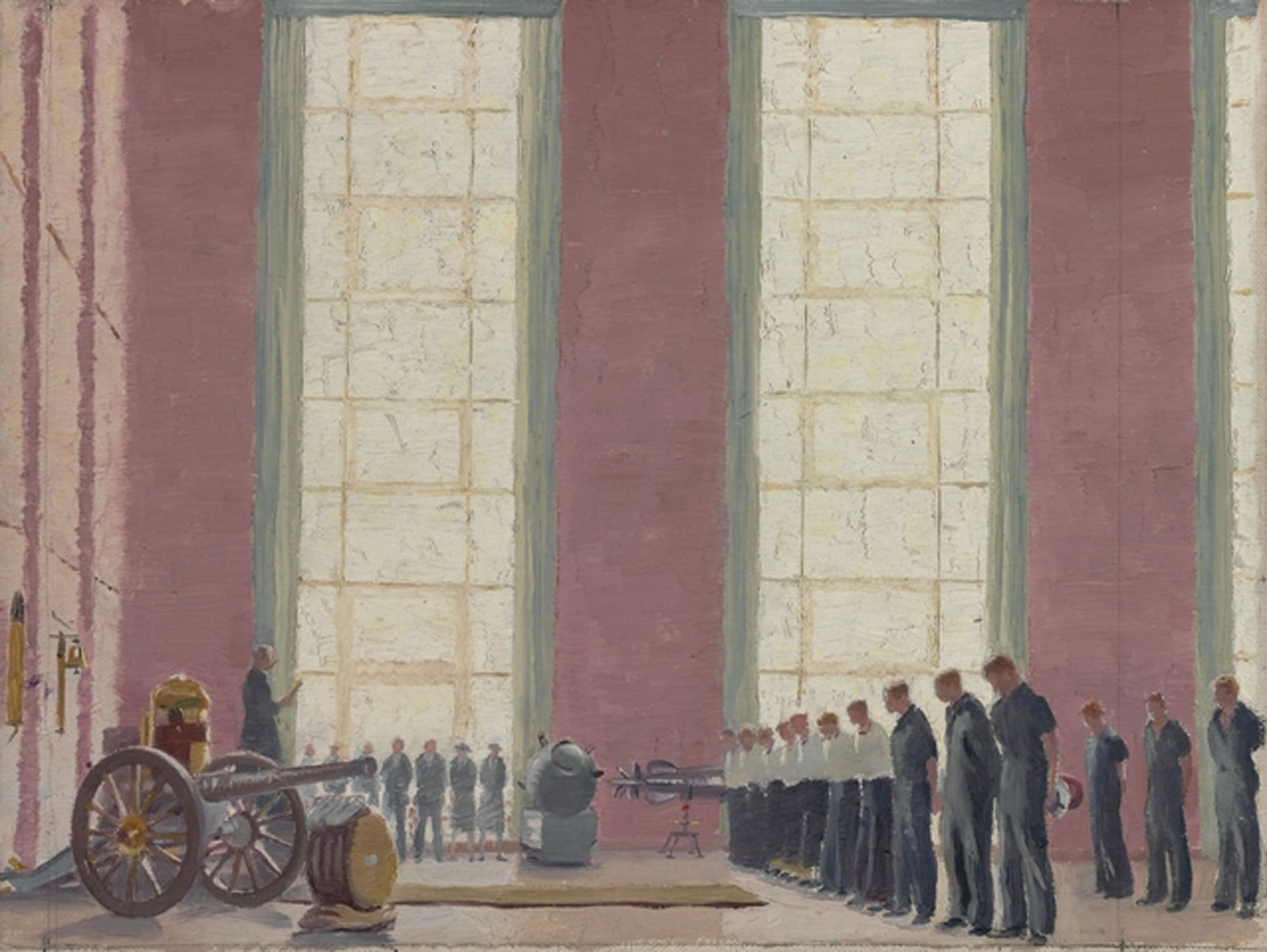
Prayers at divisions, HMAS Lonsdale
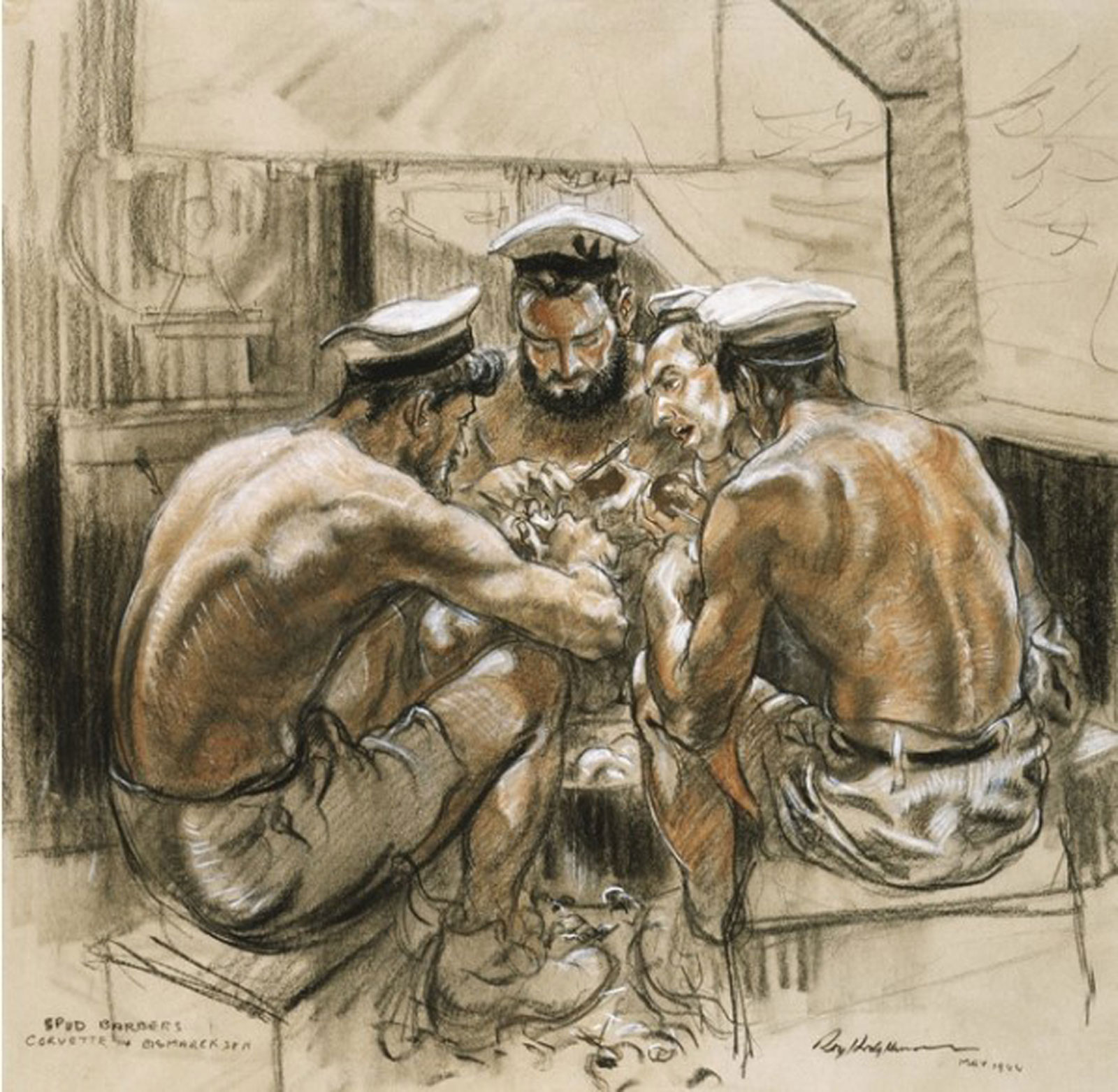
Seaman peeling potatoes
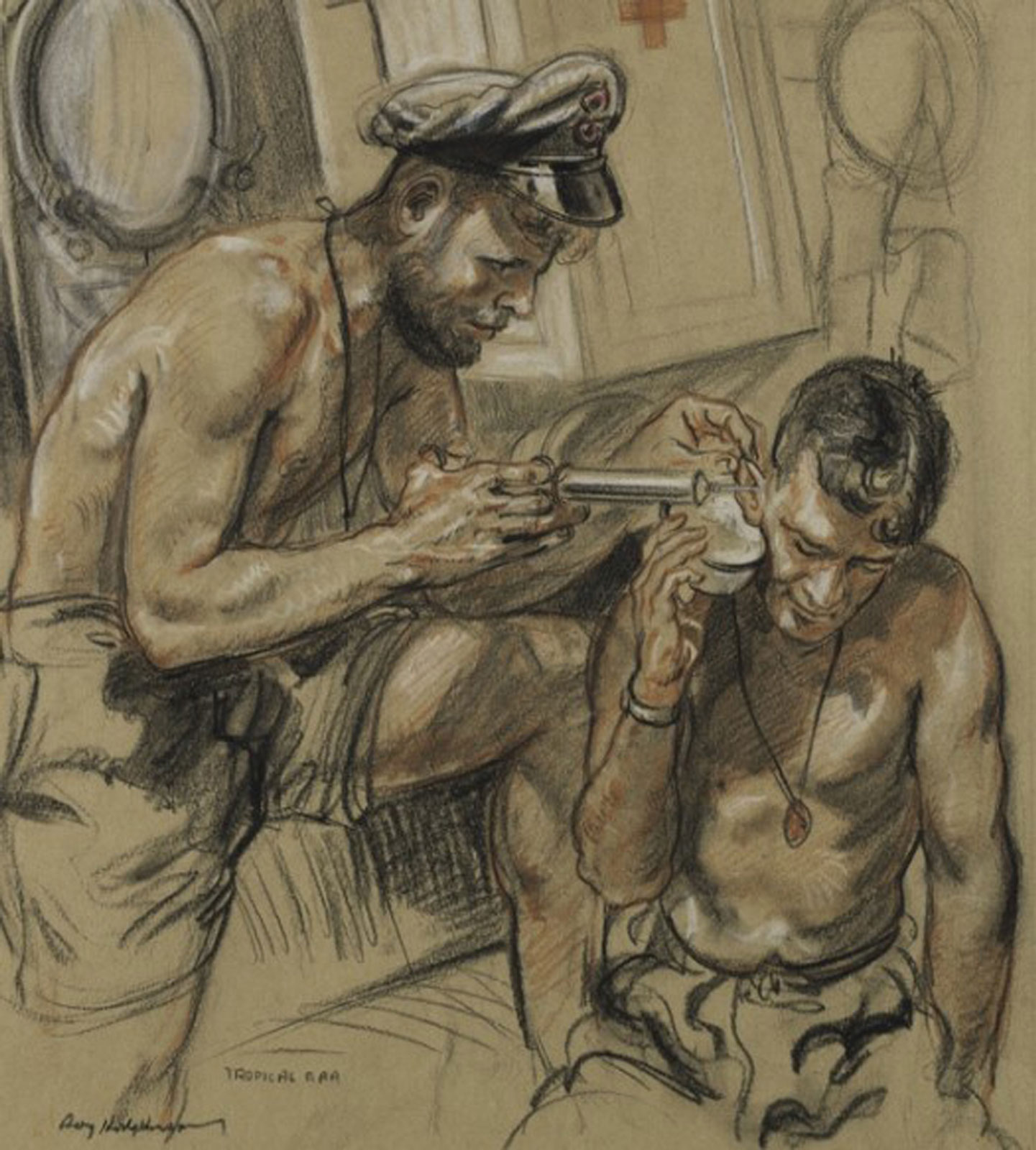
Ears being syringed
